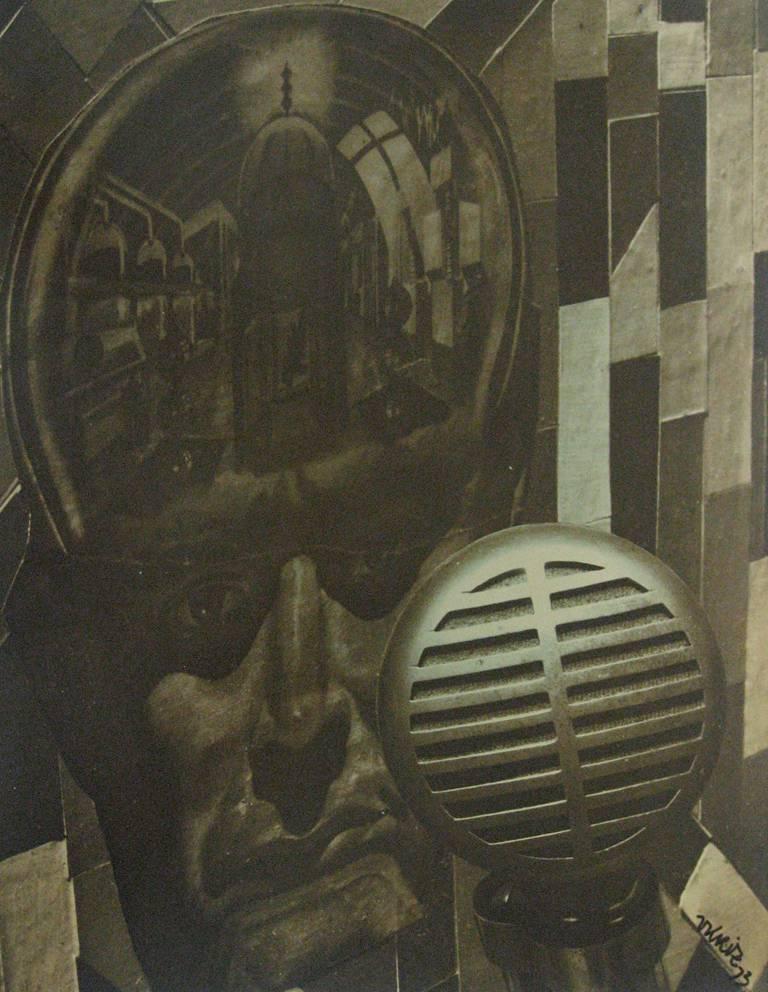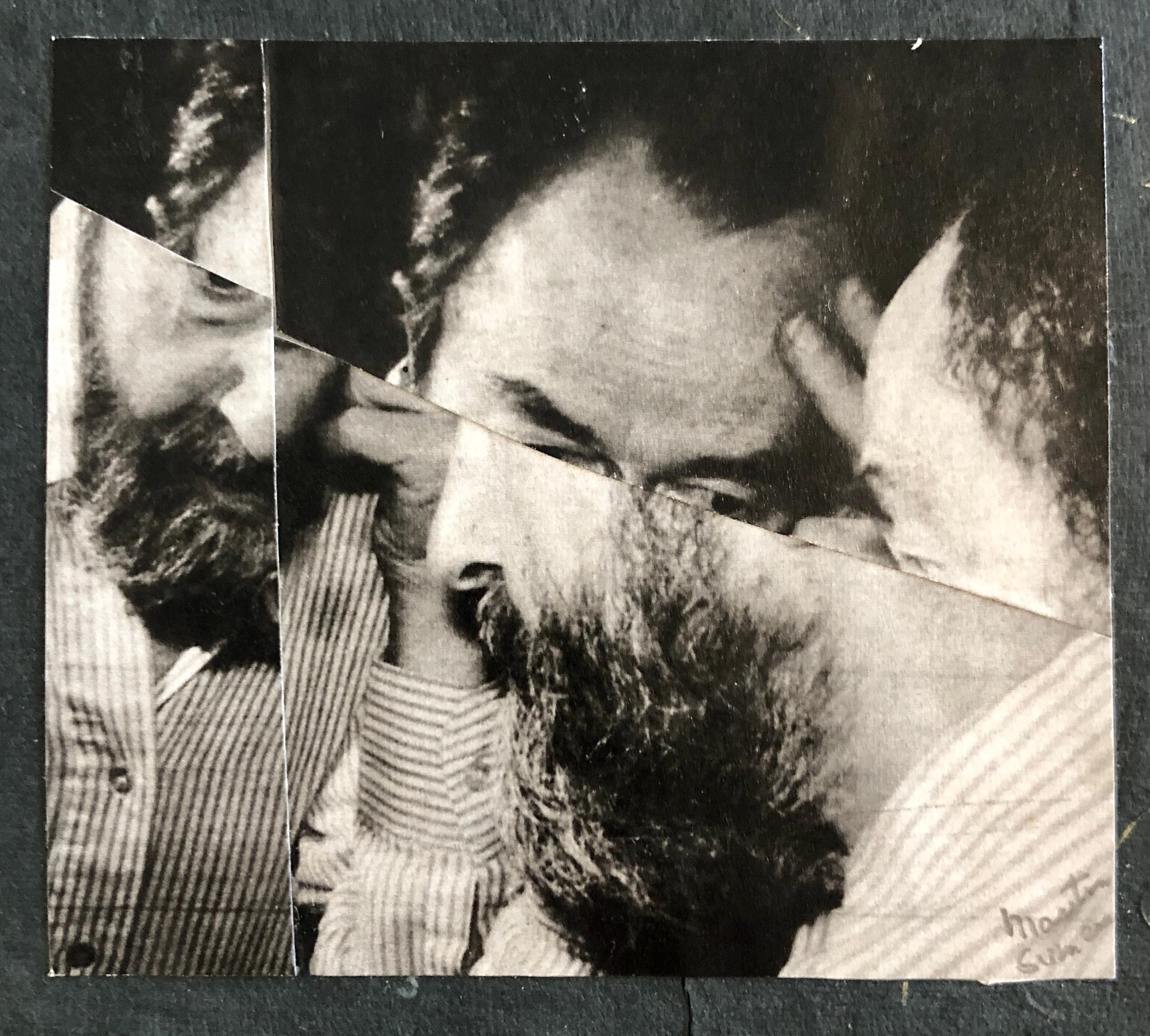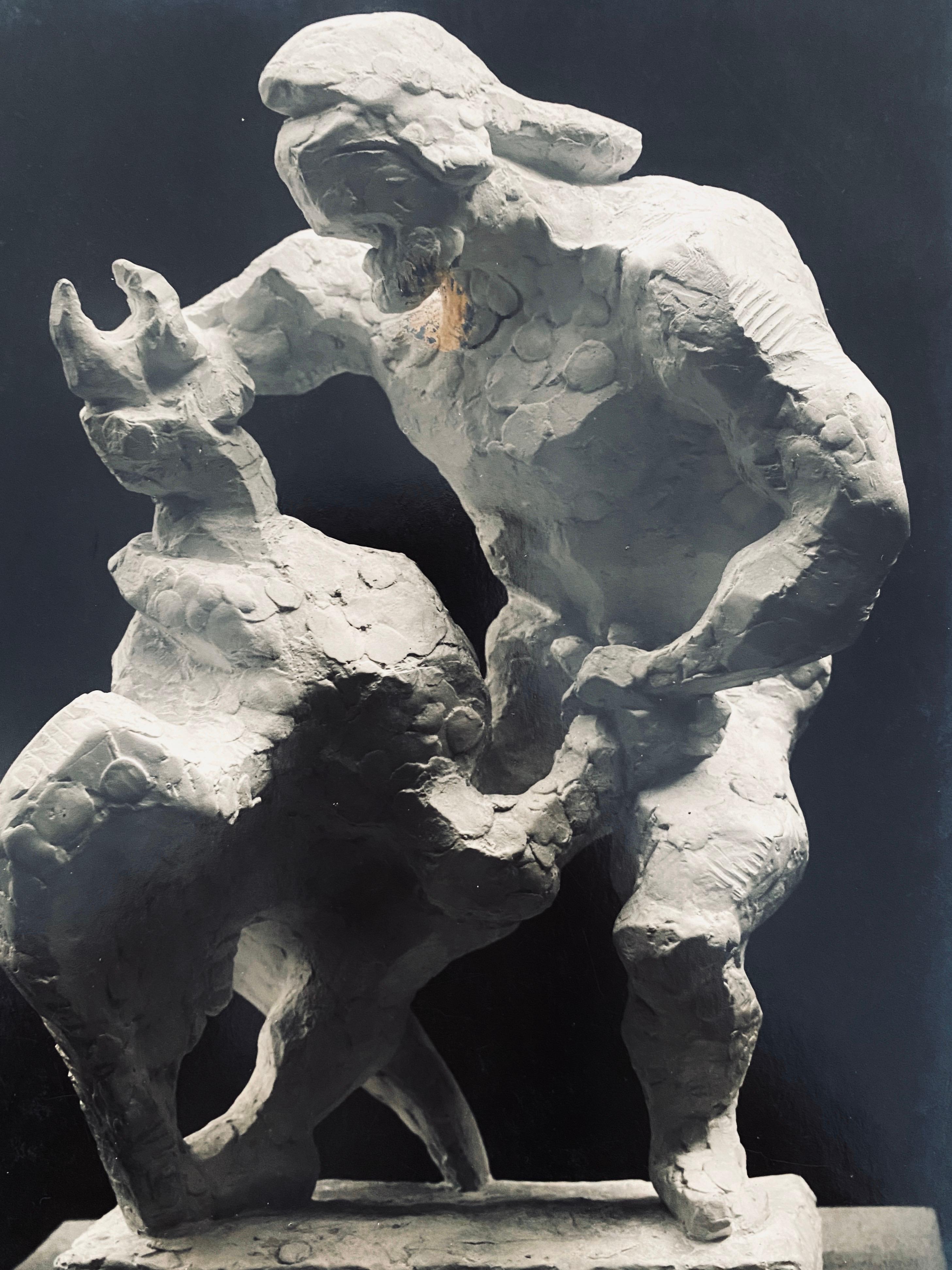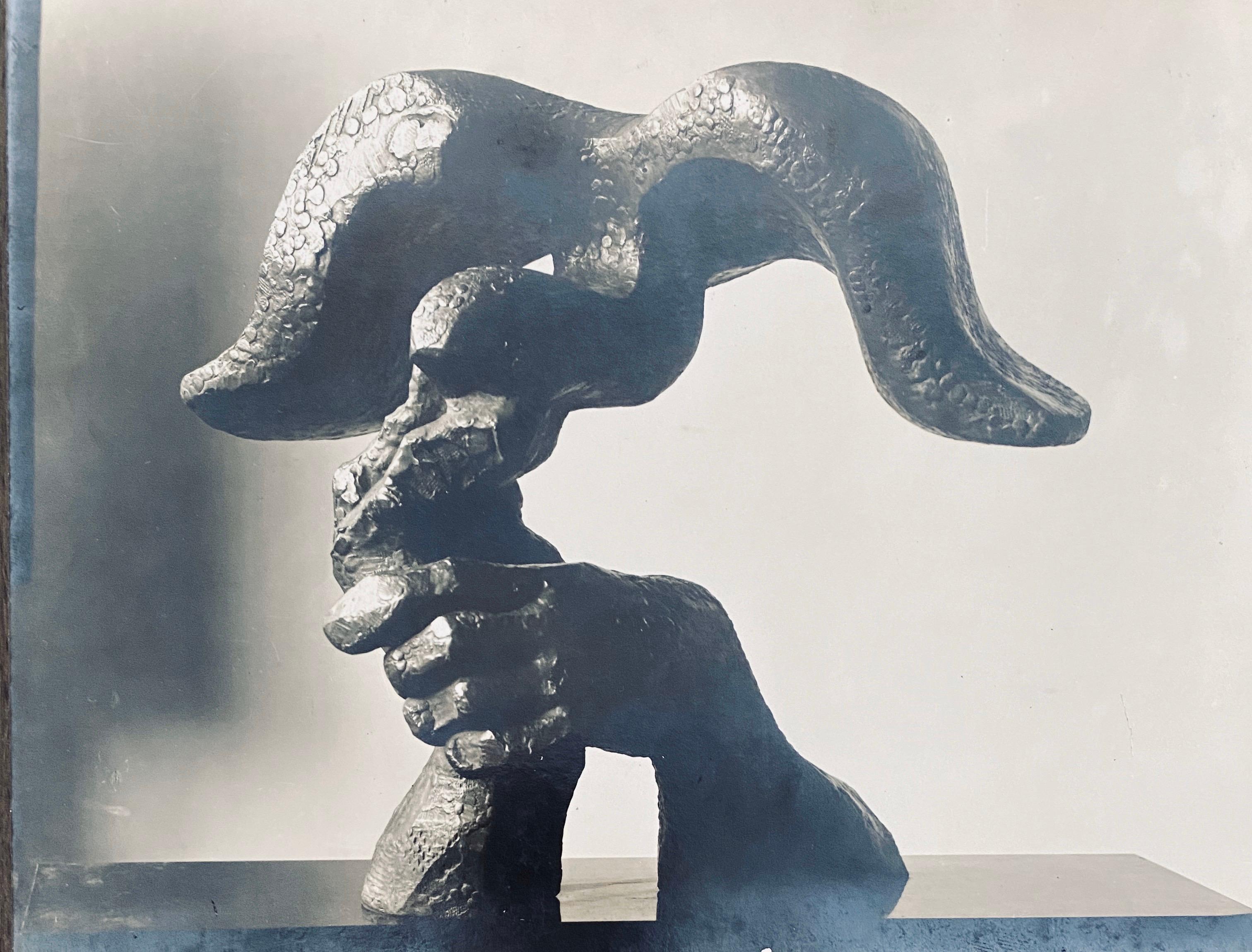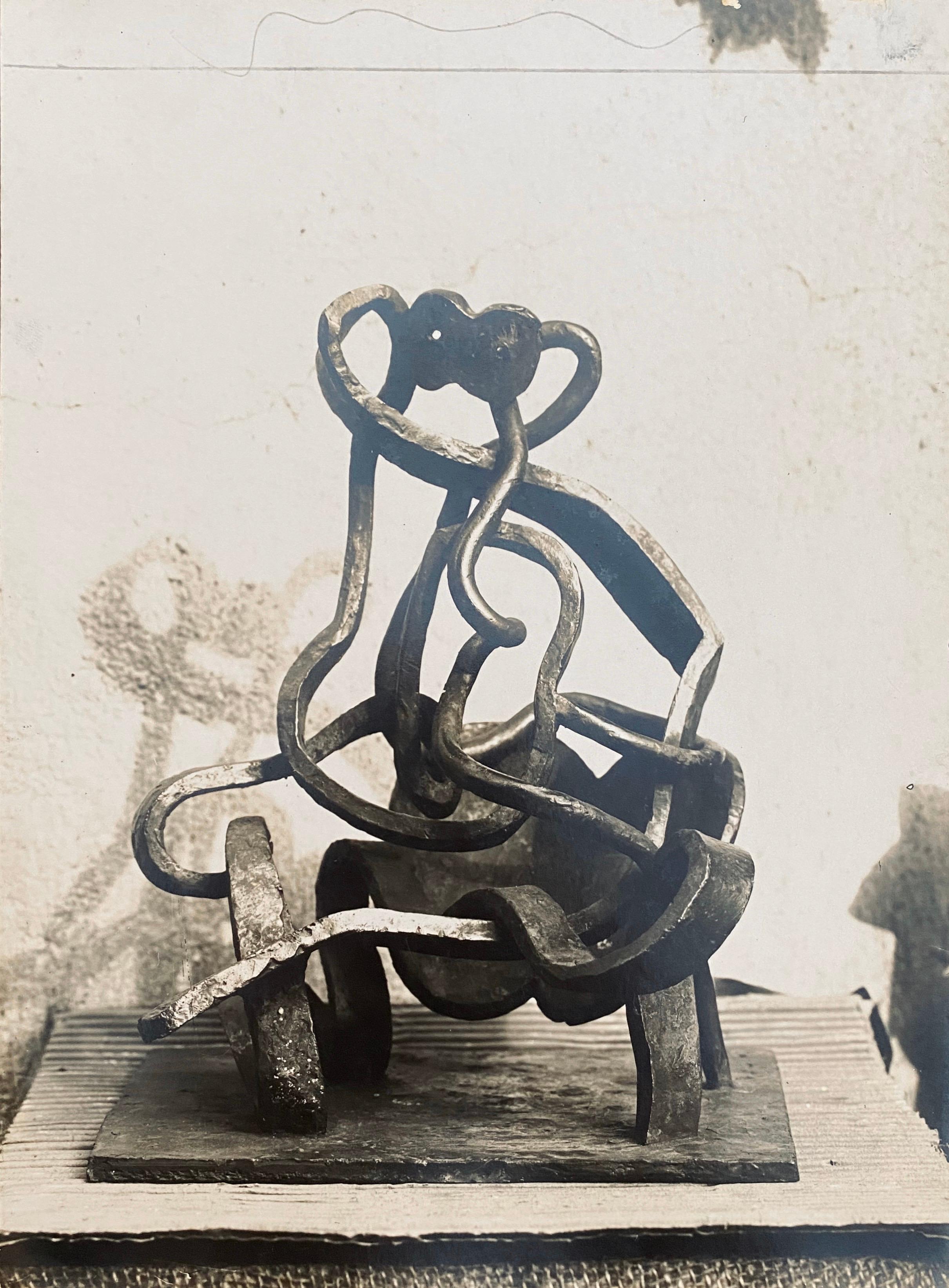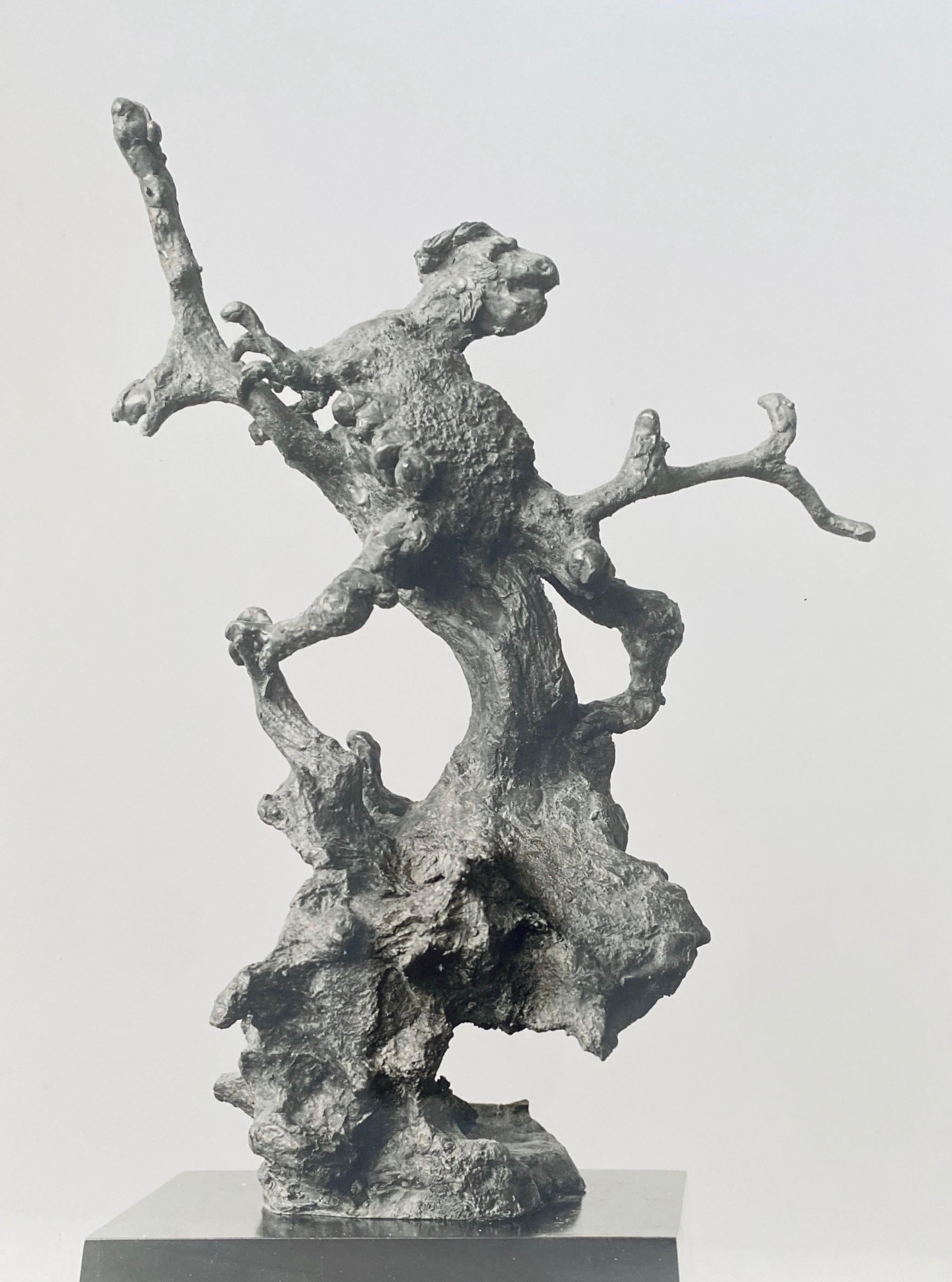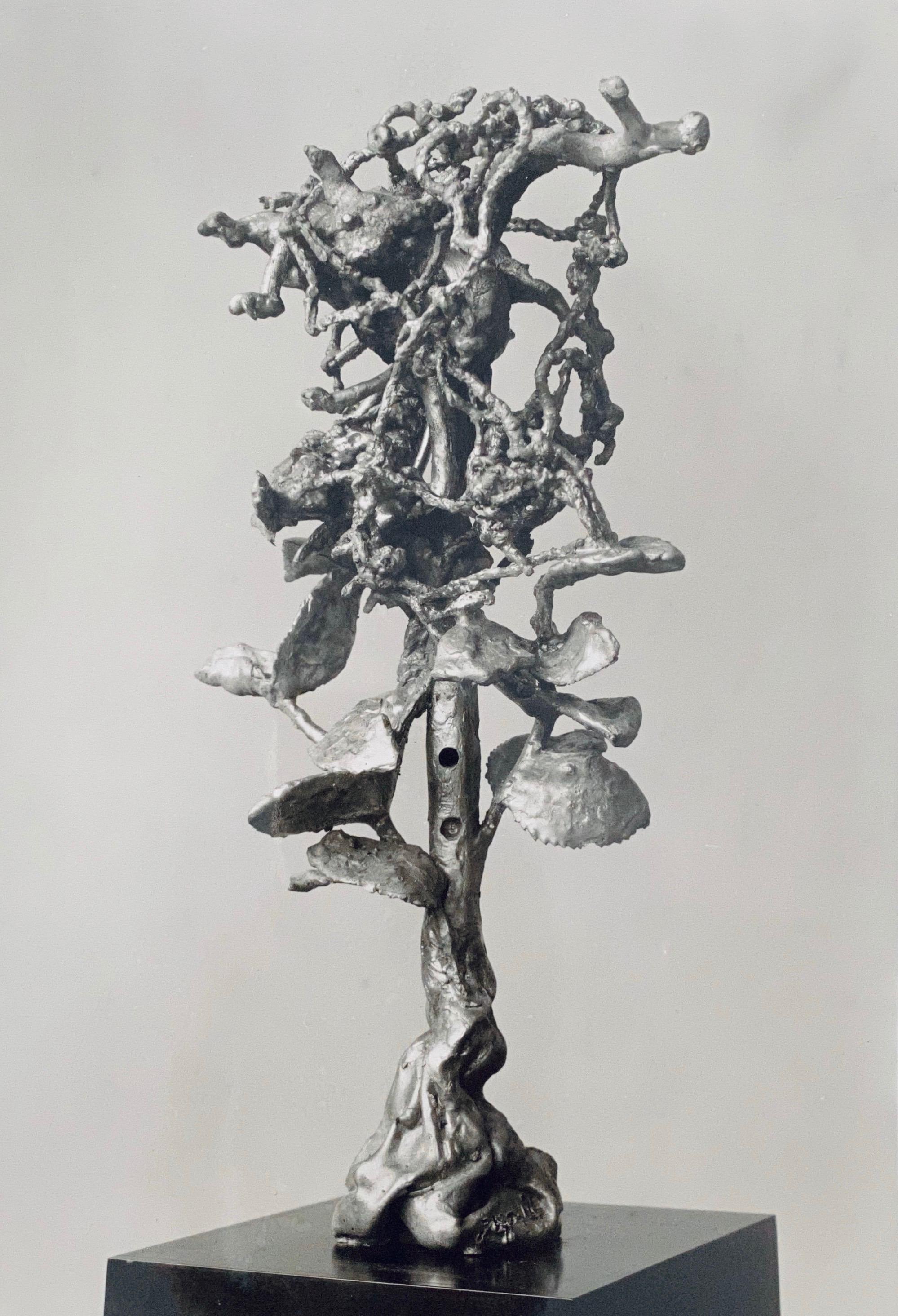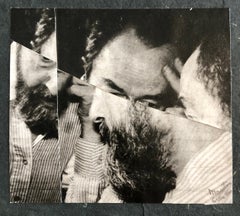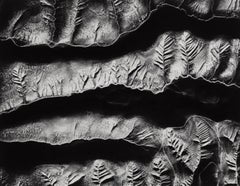
Erosion, West Slope, Tehachapi Foothills, CA
View Similar Items
1 of 5
William GarnettErosion, West Slope, Tehachapi Foothills, CA1951
1951
About the Item
You May Also Like
- Untitled from "Sirague City"By Vilem KrizLocated in Dallas, TXSigned and dated in ink on image. Dated and stamped on verso. 13 1/2 x 10 1/2 inches. Toned gelatin silver print.Category
1970s Modern Black and White Photography
MaterialsSilver Gelatin
$1,200 Sale Price65% Off - Architectural Gelatin SIlver Print Vellum Photograph Mark Citret Vintage PhotoBy Mark CitretLocated in Surfside, FLMark Citret, American, b. 1949. "Third Story Arches", Fort Point, 1998 Silver gelatin print hand signed and editioned 1/45 in pencil along lower edge. Published: "Along the Way" Mark...Category
1990s American Modern Black and White Photography
MaterialsVellum, Silver Gelatin
- Vintage Abstract Expressionist Hyman Bloom Photo Collage Assemblage PhotographBy Martin SumersLocated in Surfside, FLThis is a unique original collage, decoupage style of Jiri Kolar, This is an exceptional artwork which was part of a collaboration between Hyman Bloom and fellow artist and his very good friend Martin Sumers. This is pencil signed by Martin Sumers. Provenance: Acquired from the Sumers estate collection. Hyman Bloom (March 29, 1913 – August 26, 2009) was a Latvian-born American painter. His work was influenced by his Jewish heritage and Eastern religions as well as by artists including Altdorfer, Grünewald, Caravaggio, Rembrandt, Blake, Bresdin, James Ensor and Chaim Soutine. He first came to prominence when his work was included in the 1942 Museum of Modern Art exhibition "Americans 1942 -- 18 Artists from 9 States". MoMA purchased 2 paintings from the exhibition and Time magazine singled him out as a "striking discovery" in their exhibition review. His work was selected for both the 1948 and 1950 Venice Biennale exhibitions and his 1954 retrospective traveled from Boston's Institute of Contemporary Art to the Albright Gallery and the de Young Museum before closing out at The Whitney Museum of American Art in 1955. In a 1954 interview with Yale art professor Bernard Chaet, Willem de Kooning indicated that he and Jackson Pollock both considered Bloom to be “America’s first abstract expressionist”, a label that Bloom would disavow. Starting in the mid 1950s his work began to shift more towards works on paper and he exclusively focused on drawing throughout the 1960s, returning to painting in 1971. He continued both drawing and painting until his death in 2009 at the age of 9 Hyman Bloom (né Melamed) was born into an orthodox Jewish family in the tiny Jewish village of Brunavišķi in what is now Latvia, then part of the Russian Empire At a young age Bloom planned to become a rabbi, but his family could not find a suitable teacher. In the eighth grade he received a scholarship to a program for gifted high school students at the Museum of Fine Arts. He attended the Boston High School of Commerce, which was near the museum. He also took art classes at the West End Community Center, a settlement house. The classes were taught by Harold Zimmerman, a student at the School of the Museum of Fine Arts, who also taught the young Jack Levine at another settlement house in Roxbury. When Bloom was fifteen, he and Levine began studying with a well-known Harvard art professor, Denman Ross, who rented a studio for the purpose and paid the boys a weekly stipend to enable them to continue their studies rather than take jobs to support their families. He took Bloom and Levine on a field trip to the Museum of Modern Art in New York, where Bloom was impressed by the work of Rouault and Soutine and began experimenting with their expressive painting styles. In the 1930s Bloom worked sporadically for the Public Works of Art Project and the Federal Art Project (WPA), He shared a studio in the South End with Levine and another artist, Betty Chase. It was during this period that he developed a lifelong interest in Eastern philosophy and music, and in Theosophy. He first received national attention in 1942 when thirteen of his paintings were included in the Museum of Modern Art (MoMA) exhibition Americans 1942: 18 Artists from 9 States, curated by Dorothy Miller. MoMA purchased two of his paintings from that exhibition, and he was featured in Time magazine. The titles of his paintings in the exhibition reflect some of his recurring themes. Two were titled The Synagogue, another, Jew with the Torah; Bloom was actually criticized by one reviewer for including "stereotypical" Jewish images. He also had two paintings titled The Christmas Tree, and another titled The Chandelier, both subjects he returned to repeatedly. Another, Skeleton (c. 1936), was followed by a series of cadaver paintings in the forties, and The Fish (c. 1936) was one of many paintings and drawings of fish he created over the course of his career. Bloom was associated at first with the growing Abstract Expressionist movement. Willem de Kooning and Jackson Pollock, who first saw Bloom's work at the MoMA exhibition, considered Bloom "the first Abstract Expressionist artist in America." In 1950 he was chosen, along with the likes of de Kooning, Pollock, and Arshile Gorky, to represent the United States at the Venice Biennale. That same year Elaine de Kooning wrote about Bloom in ARTnews, noting that in paintings such as The Harpies, his work approached total abstraction: "the whole impact is carried in the boiling action of the pigment". In 1951 Thomas B. Hess reproduced Bloom's Archaeological Treasure in his first book, Abstract Painting: Background and American Phase, along with works by Picasso, Pollock, and others. Both de Kooning and Hess remarked on Bloom's expressive paint handling, a key characteristic of Abstract Expressionist painting. As abstract expressionism dominated the American art world, Bloom became disenchanted with it, calling it "emotional catharsis, with no intellectual basis." In addition, instead of moving to New York to pursue his career, he opted to stay in Boston. As a result he fell out of favor with critics and never achieved the kind of fame that Pollock and others did. He disliked self-promotion and never placed much value on critical acclaim. Many of Bloom's paintings feature rabbis, usually holding the Torah. According to Bloom, his intentions were more artistic than religious. He began questioning his Jewish faith early in life, and painted rabbis, he claimed, because that was what he knew. Over the course of his career he produced dozens of paintings of rabbis...Category
1990s Modern Abstract Photography
MaterialsPaper, Photographic Paper
- Vintage Silver Gelatin Photograph Jacques Lipchitz Sculpture Photo SignedBy Marc VauxLocated in Surfside, FLMarc Vaux, a figure of Montparnasse, produced a trove of photographs which are currently held in the collection of the Centre Pompidou in Paris, France. Marc Vaux was committed equally to supporting artists, notably by creating the Foyer des Artistes (1946-70) and, in 1951, the first Musée du Montparnasse at 10, rue de l’Arrivée. Marc Vaux was born on February 19, 1895 in Crulai, Normandy Thanks to the color merchant from whom he bought his plates and his photographic equipment, he met the sculptor Charles Desvergnes winner of Prix the Rome and author of various memorials who was looking for someone to photographs his works. Two of Marc Vaux’s first clients were his neighbors of 21 Avenue du Maine- Marie Vassilieff and Maria Blanchard who introduced him to Parisian avant-garde artists: Juan Gris, André Lhote, Jacques Lipchitz, Ortiz de Zarate...Category
1930s Modern Abstract Photography
MaterialsPhotographic Paper, Silver Gelatin
- Vintage Silver Gelatin Photograph Jacques Lipchitz Bronze Sculpture Photo SignedBy Marc VauxLocated in Surfside, FLMarc Vaux, a figure of Montparnasse, produced a trove of photographs which are currently held in the collection of the Centre Pompidou in Paris, France. Marc Vaux was committed equally to supporting artists, notably by creating the Foyer des Artistes (1946-70) and, in 1951, the first Musée du Montparnasse at 10, rue de l’Arrivée. Marc Vaux was born on February 19, 1895 in Crulai, Normandy Thanks to the color merchant from whom he bought his plates and his photographic equipment, he met the sculptor Charles Desvergnes winner of Prix the Rome and author of various memorials who was looking for someone to photographs his works. Two of Marc Vaux’s first clients were his neighbors of 21 Avenue du Maine- Marie Vassilieff and Maria Blanchard who introduced him to Parisian avant-garde artists: Juan Gris, André Lhote, Jacques Lipchitz, Ortiz de Zarate...Category
1930s Modern Abstract Photography
MaterialsSilver Gelatin, Photographic Paper
- Vintage Silver Gelatin Photograph Jacques Lipchitz Bronze Sculpture Photo SignedBy Marc VauxLocated in Surfside, FLMarc Vaux, a figure of Montparnasse, produced a trove of photographs which are currently held in the collection of the Centre Pompidou in Paris, France. Marc Vaux was committed equally to supporting artists, notably by creating the Foyer des Artistes (1946-70) and, in 1951, the first Musée du Montparnasse at 10, rue de l’Arrivée. Marc Vaux was born on February 19, 1895 in Crulai, Normandy Thanks to the color merchant from whom he bought his plates and his photographic equipment, he met the sculptor Charles Desvergnes winner of Prix the Rome and author of various memorials who was looking for someone to photographs his works. Two of Marc Vaux’s first clients were his neighbors of 21 Avenue du Maine- Marie Vassilieff and Maria Blanchard...Category
1920s Modern Abstract Photography
MaterialsPhotographic Paper, Silver Gelatin
